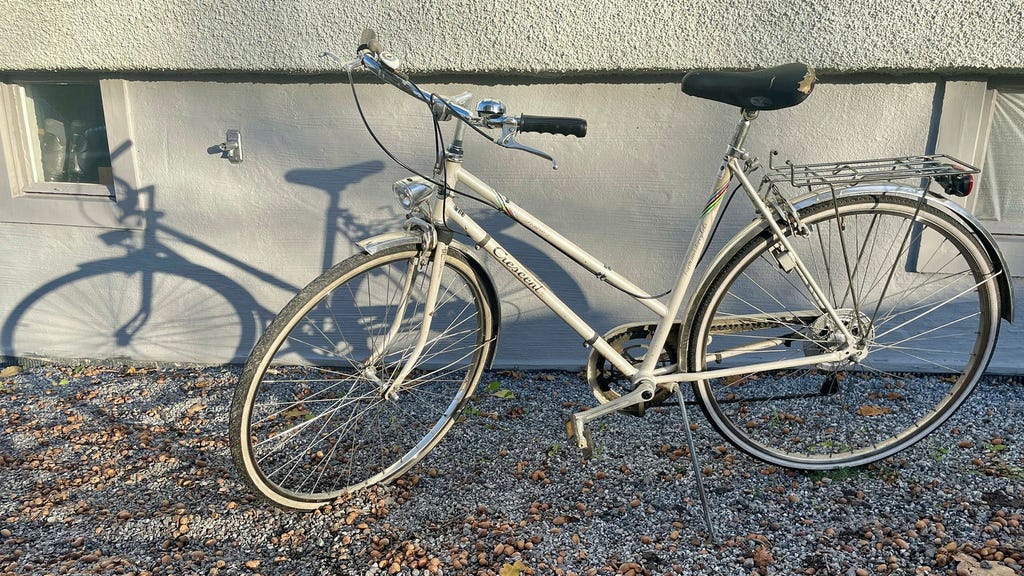The author’s ”Vita Blixten” (White Lightning), a bicycle manufactured in the 1980s, spent much of its life sheltered in a garage in the rural expanse of Västerbotten County, Sweden. This provenance bestowed upon it a pristine condition, a stark contrast to vehicles ravaged by the corrosive salt and slush of Stockholm. Its unspoiled nature captivated even TV4-Magnus, the author’s trusted bicycle mechanic, who declared it a marvel of quality. The bicycle boasts a practical frame lock, a feature lamented as missing from modern standard equipment, and originally sported a classic dynamo for the front light. While the dynamo eventually faltered, it has since been replaced by a retro-styled, permanently mounted battery-powered lamp.
The bicycle, having served the author’s mother for several years, eventually embarked on a 730-kilometer journey south to its new owner. The author, reflecting on past cycling experiences detailed in previous newspaper columns, recalls his earlier conclusion that three bicycles were optimal: a spring/autumn bicycle (a used 1990s model purchased in 2000), a winter bicycle equipped with a studded front tire (to avoid excessive weight), and a lightweight racing bicycle for pleasant summer rides. While previously content with this trio, the arrival of ”Vita Blixten” marks a new apex in his cycling enjoyment, becoming his fourth and most cherished bicycle.
While other men of his age might indulge in vintage cars or motorcycles, the author finds profound satisfaction in his classic bicycle. ”Vita Blixten” is more than just transportation; it’s an experience. Its effortless glide, attributed perhaps to its superior bearings, prompts the author to ponder the possibility of a golden age of Swedish bicycle manufacturing in the 1980s. The bicycle’s elegance and speed make it the perfect companion for stylishly arriving at festive gatherings, fine dining experiences, or exciting sporting events.
Beyond its aesthetic and functional qualities, ”Vita Blixten” also offers a nostalgic thrill. Its ability to execute a sharp skid stop provides a playful, if slightly audacious, entrance, a touch of youthful exuberance carried into adulthood. This beloved bicycle holds a special place in the author’s heart. Remarkably, apart from the headlight replacement, ”Vita Blixten” has required no mechanical intervention from TV4-Magnus, continuing to roll smoothly into its fifth decade of existence. Its resilience and enduring quality serve as a testament to its robust construction and the care it has received throughout its life.
The author’s fondness for ”Vita Blixten” transcends mere appreciation for a vintage bicycle; it’s a connection to a simpler time, a celebration of durable craftsmanship, and a source of pure cycling joy. It represents a conscious choice against the complexities of modern life, finding contentment in the elegant simplicity of a well-made, classic machine. The bicycle serves not just as transportation, but as a statement of individuality and a reminder of the enduring appeal of timeless design.
The story of ”Vita Blixten” is more than just a tale of a bicycle; it’s a reflection on the author’s personal journey and his appreciation for objects that have stood the test of time. It’s about finding joy in the unexpected, appreciating the quality of the past, and the simple pleasure of riding a truly exceptional bicycle. The author’s affection for ”Vita Blixten” is palpable, making the reader not just understand his appreciation for the bicycle, but share in his enthusiasm for this unique, vintage machine.














